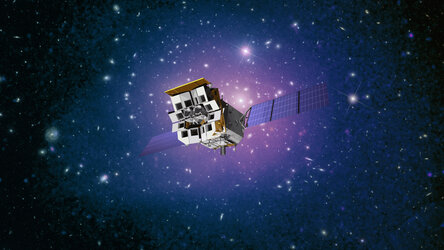ESA Microelectronics Section
About Microelectronics
The section is responsible for the microelectronics design, technology, and methodology needed by on-board control, data and signal processing systems for spacecraft platform and payloads.
Responsibilities
The section’s responsibilities include:
- using microsystems technology and techniques that permit partial or full system integration on a single chip
- establishing VLSI design methods and techniques to achieve miniaturised low-power high-speed IC design, ensuring good levels of testability, reusability, and reliability
- evaluating new technologies and CAD tools, assembly, and packaging techniques from an application perspective
- investigating the usage of deep submicron commercial technologies for space applications by improving radiation performance purely by design
The section provides technical support and expertise in integrated circuits design and technology for spacecraft platform and payloads and for space-related ground applications. This technical support extends to all programme directorates including Navigation and Telecommunications, Earth Observation, Science and Manned Space flight, and Microgravity.

It defines and launches internal and external activities to ensure the short, medium-, and long-term availability of key components that are qualified for use in space. Examples of such components are application-specific integrated circuits (ASICs), programmable devices (for example, FPGAs), reusable soft building blocks (synthesisable IP cores or macro cells), multi-chip modules (MCM) and chip-sets, and other specialised and highly integrated semiconductor devices (for example, active pixel sensors).
Background information

The applications, the nature of the technology (digital, analogue, and mixed) and the functions that are of interest to the section is very broad. Examples include such diverse fields as data handling and control, microprocessors and microcontrollers (for example, ERC32, LEON), bus nodes and routers (AMBA, PCI, 1553, CAN, and SpaceWire), CCSDS/ECSS communication protocols (telecommand and telemetry), DSP for image processing, navigation and telecommunication receivers, radiation detectors front-ends, and image sensors.
Some of the section's activities also aim at ensuring the availability, accessibility, and reliability of semiconductor technology and manufacturing processes that are suitable to produce space components (EQML and MIL Silicon technologies of different geometries, Multi-Project Wafer Programmes, Assembly, Packaging and Test resources).
It is heavily involved with ASIC/FPGA/System-on-Chip design methodologies, including emerging hardware-software co-design techniques.
Another significant responsibility is for preventive and mitigation techniques against radiation effects in integrated circuits. Examples of this are radiation hardened by design libraries, single-event upset (SEU) hardening at register transfer level or gate-level netlist topology, safe use of reprogrammable FPGAs in space, SEU emulation, and effects analysis.















 Germany
Germany
 Austria
Austria
 Belgium
Belgium
 Denmark
Denmark
 Spain
Spain
 Estonia
Estonia
 Finland
Finland
 France
France
 Greece
Greece
 Hungary
Hungary
 Ireland
Ireland
 Italy
Italy
 Luxembourg
Luxembourg
 Norway
Norway
 The Netherlands
The Netherlands
 Poland
Poland
 Portugal
Portugal
 Czechia
Czechia
 Romania
Romania
 United Kingdom
United Kingdom
 Slovenia
Slovenia
 Sweden
Sweden
 Switzerland
Switzerland



























